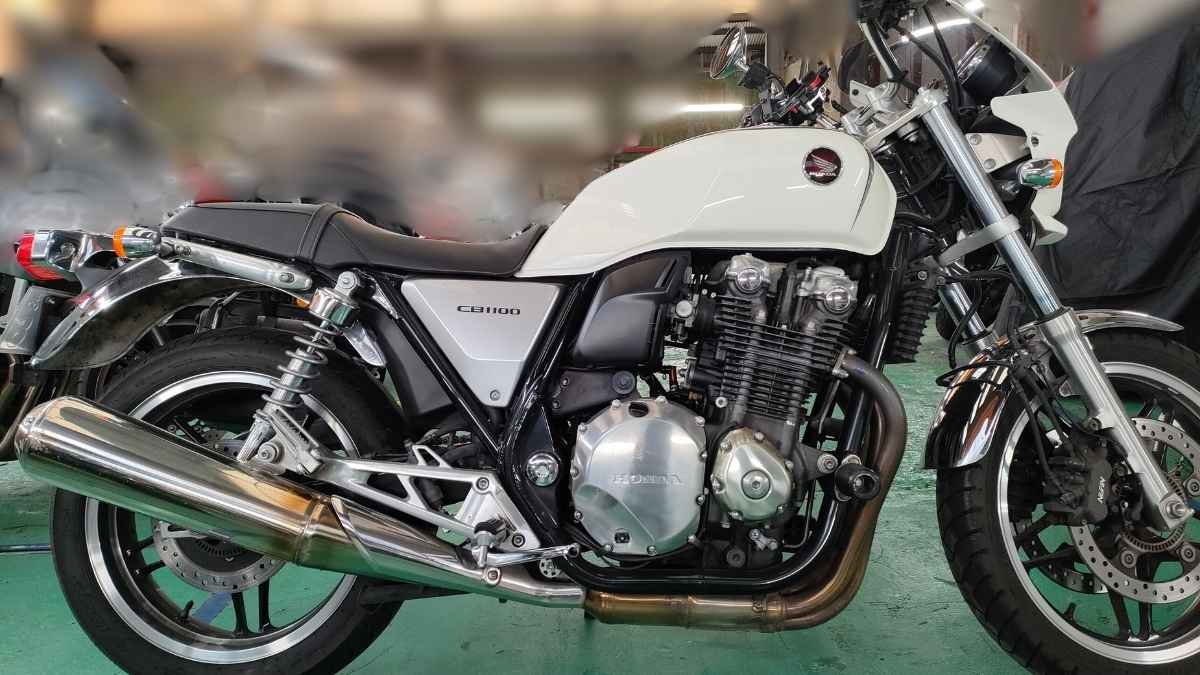I recently replaced the battery on my CB1100 and have compiled the procedure here. While it’s possible to have a motorcycle shop handle this task, I hope this guide will assist those who wish to do it themselves.
This article covers:
- When to replace the battery
- Tools required for the replacement
- Step-by-step replacement procedure
- Pros and cons of DIY replacement
The replacement process itself isn’t particularly difficult, and having done it on other motorcycles, I anticipated no issues this time. However, like many motorcycles, I assumed the battery would be located under the seat. Upon opening the seat and not finding the battery, I was left wondering, “Where is the battery?” Therefore, I’ll also explain the battery’s location in the replacement steps below.
About the Author
- 35 years of experience as an IT engineer
- 13 years of motorcycle riding history
- Has ridden everything from 50cc scooters to 1800cc tourer
- Owned a total of 11 motorcycles
Pros and Cons of Replacing the Battery Yourself
Pros
- Provides an opportunity to inspect areas not usually checked
- Allows selection of a preferred battery
- Potential cost savings on battery procurement
- Flexibility to replace the battery on your own schedule without needing appointments
Cons
- Requires effort and time
- Need to secure a suitable workspace
- Must arrange proper disposal of the used battery
These cons are often reasons why people opt to have a motorcycle shop handle the replacement. Particularly, many municipalities do not collect used batteries as household waste, so proper disposal is essential.
When Should You Replace the Battery?
There’s no definitive answer, but common indicators include:
- Being advised during inspections or vehicle checks
- After covering a certain distance
- After a specific period has elapsed
- Noticing a drop in voltage upon measurement
- Experiencing weaker starter motor rotation
In my case, I often replace the battery when I feel the starter motor’s rotation weakening. Battery lifespan varies greatly depending on usage conditions, making it challenging to determine a precise replacement interval.
Tools Required for Battery Replacement
Essentially, a Phillips screwdriver is sufficient. However, for the CB1100, I personally recommend using a ratchet wrench set. Due to the battery’s placement, space is limited, and using a wrench set can make the process smoother.
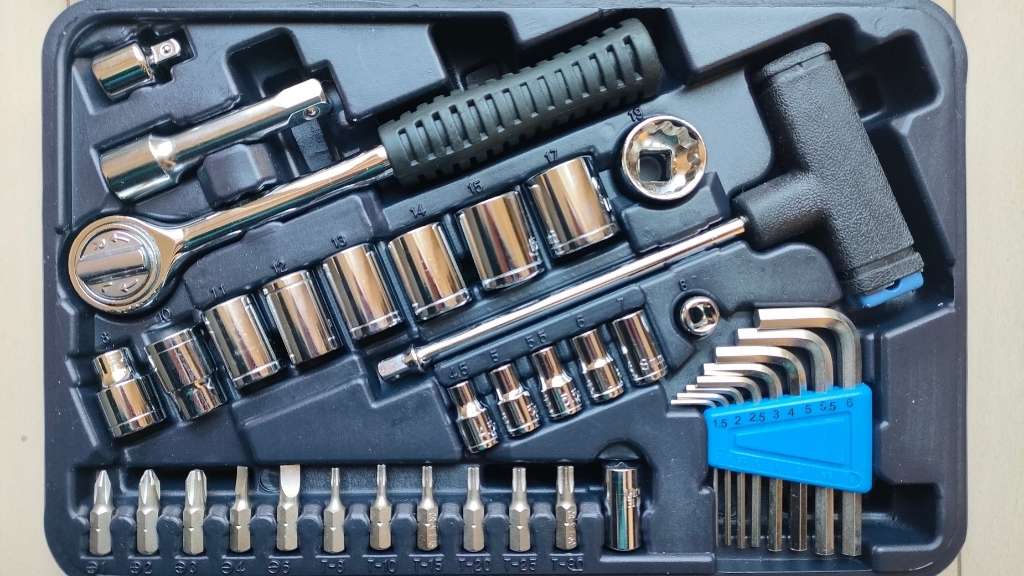
Battery Used
I chose the GS Yuasa “YTZ-14S” battery for this replacement. While there are various compatible batteries from different manufacturers, I opted for GS Yuasa due to its high reliability. Given that my CB1100 is a 2012 model with over 50,000 km, I wanted to minimize potential issues. Although it was among the more expensive options, I believed it was worth the investment.

Replacement Procedure
Open the Seat
Upon opening the seat, the battery isn’t immediately visible. It’s located beneath the ETC device and toolset, as indicated by the arrow in the image.
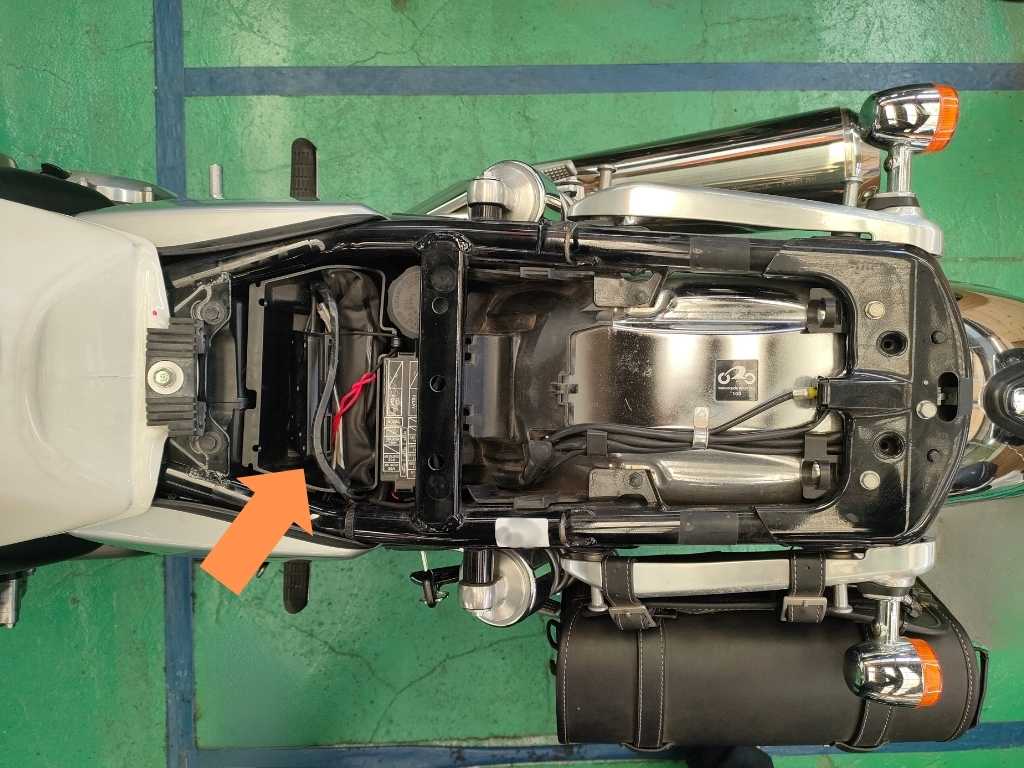
Remove the Toolset and ETC Device
After removing the ETC device and toolset, you’ll see a cover.
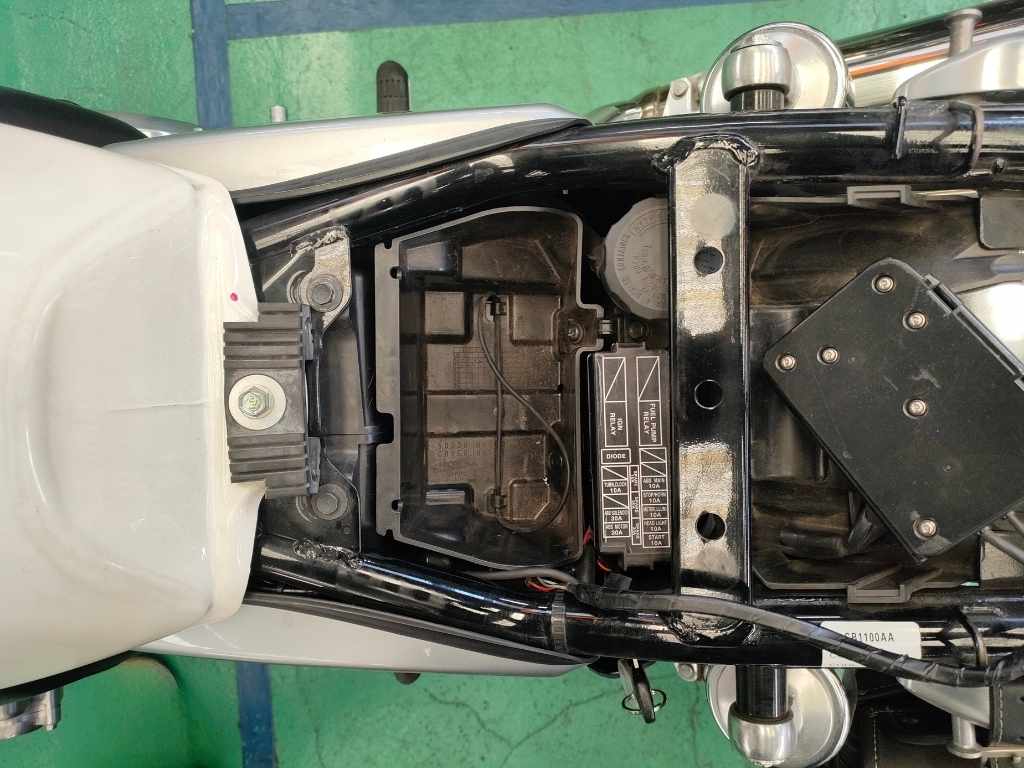
Remove the Cover
The cover is secured with one screw and one clip. Remove these to take off the cover.
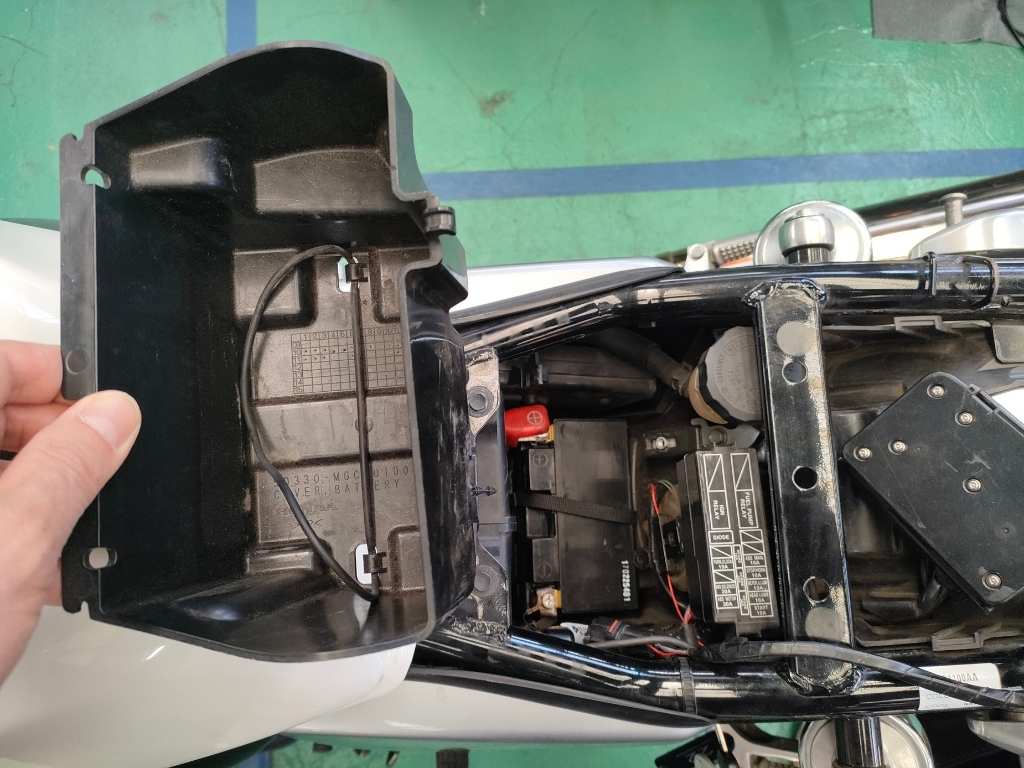
Disconnect the Battery
With the cover removed, the battery becomes visible. While a Phillips screwdriver can be used, a ratchet wrench is recommended due to limited space. When disconnecting the battery, always remove the negative terminal first, followed by the positive terminal.
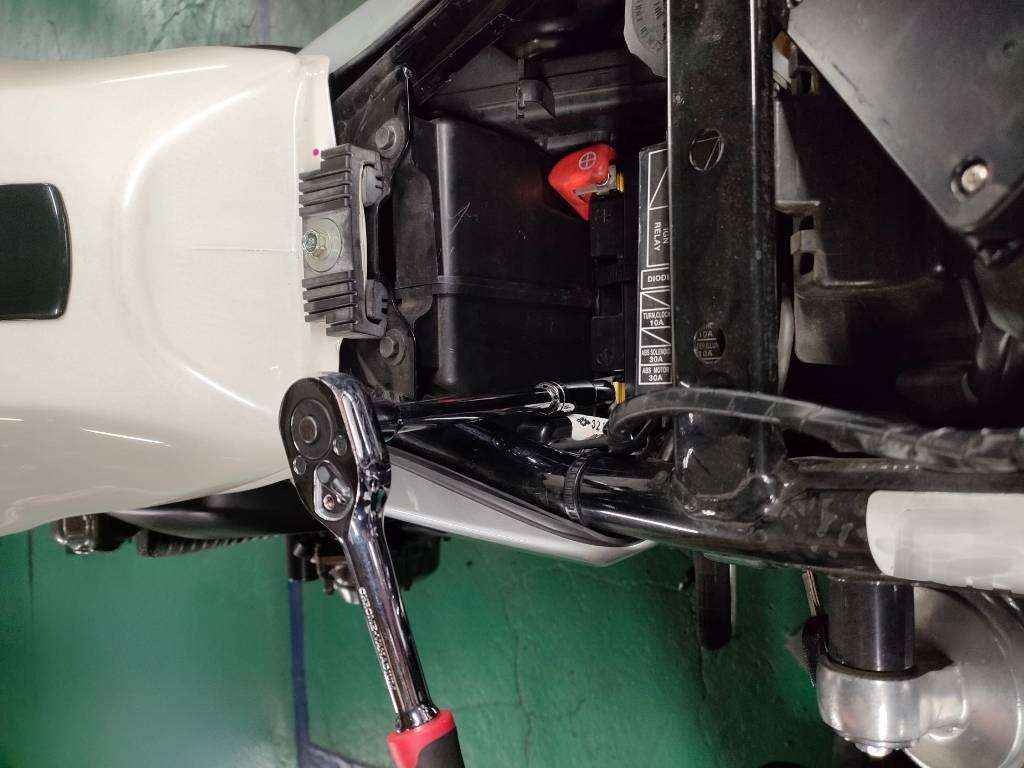
Remove the Battery
Once the terminals are disconnected, extract the battery.
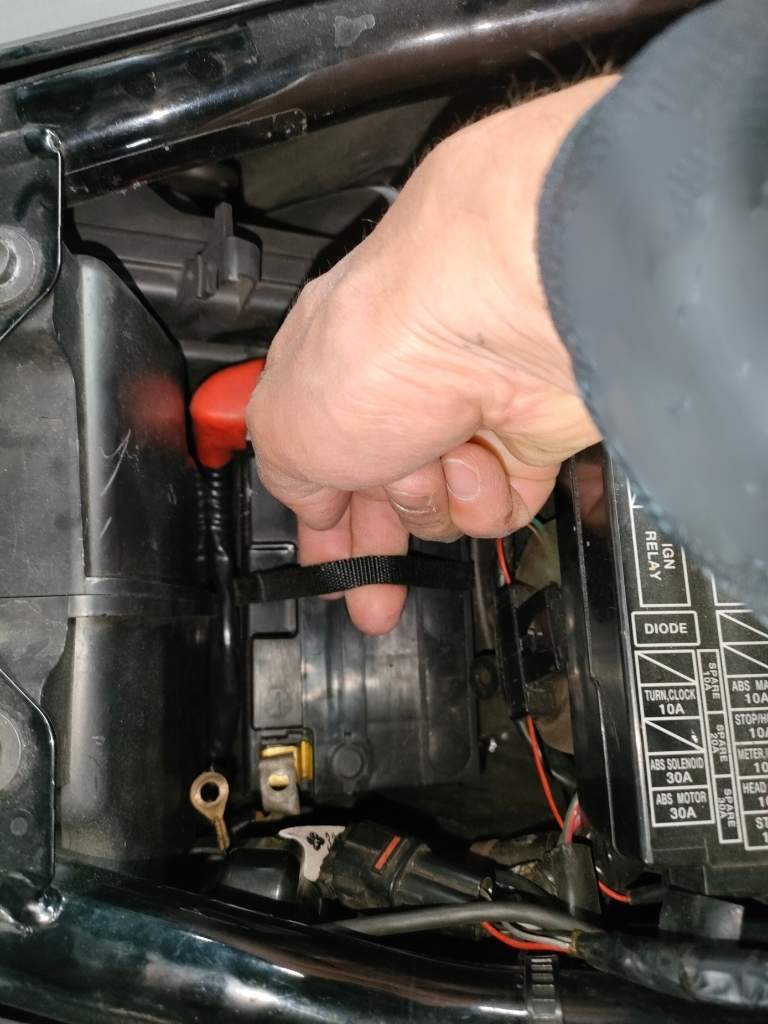
The removed battery was a Taiwan Yuasa model, which had served well over the years.
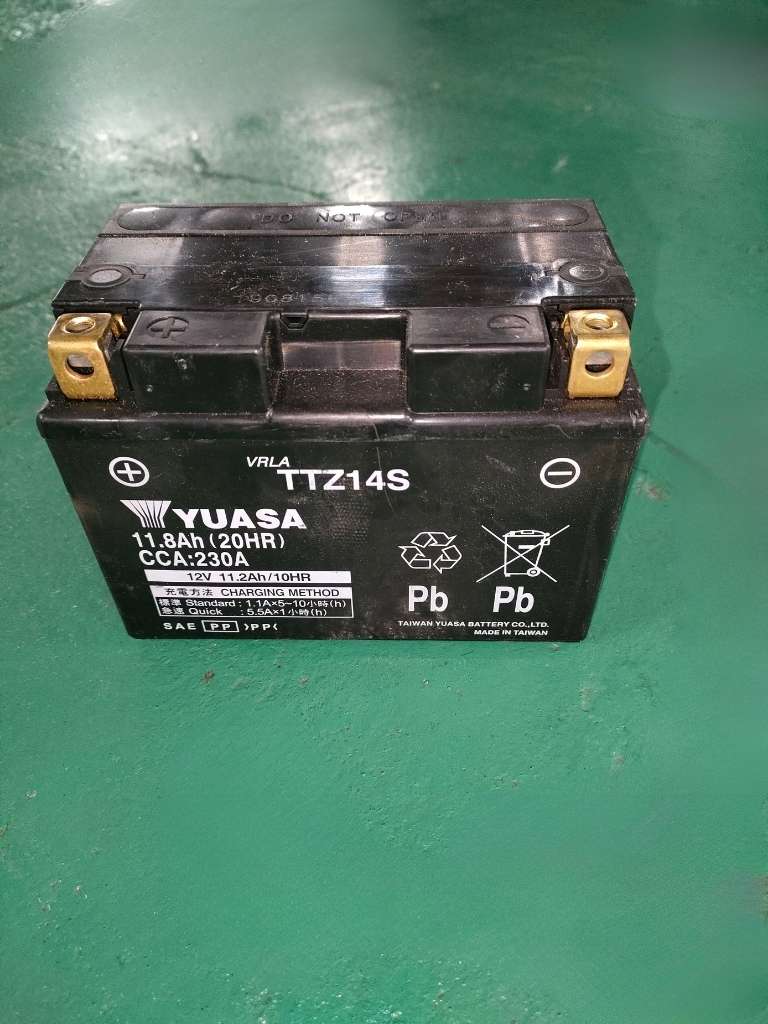
Install the New Battery
Place the new battery in position and reconnect the terminals in reverse order: positive first, then negative. Ensure everything is secured properly.
Disposing of the Used Battery
Most municipalities do not accept motorcycle batteries as household waste. Consider the following disposal methods:
- Return it to the store where you purchased the new battery
- Hire a waste collection service
- Ask a motorcycle shop or parts store to dispose of it
In my case, the motorcycle shop that handles my inspections and maintenance accepts used batteries, so I always rely on them for disposal.
Conclusion
While the battery’s location on the CB1100 might be a bit tricky to find, the replacement process itself is straightforward. With the right tools and understanding of the procedure, you can confidently replace the battery yourself.
Doing it yourself not only helps you become more familiar with your motorcycle but can also save costs. However, always ensure you have a proper plan for disposing of the used battery. Consider taking on this task as an opportunity to deepen your connection with your motorcycle.
